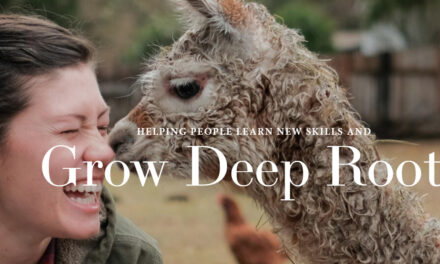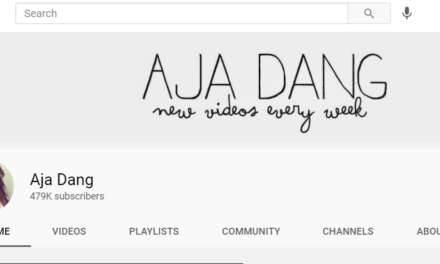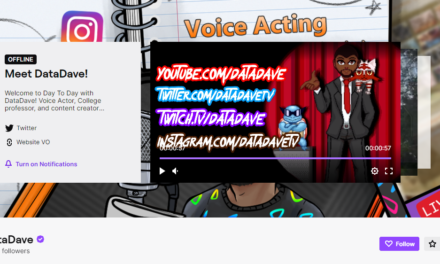
MAY 25, 2021
full tilt
What is a Content Tilt?
What’s the news?
Today is the launch of the new Content Inc. book by The Tilt founder Joe Pulizzi. (Don’t worry, this isn’t a fluff promo piece to impress the boss.)
So what?
That makes it a good time to talk about the content tilt – the key differentiator for successful content entrepreneurs, as Joe details in the book.
Where does the tilt concept come from?
It comes from a scene in The Matrix starring Keanu Reeves, Laurence Fishburne, and Carrie-Ann Moss.
Neo (played by Keanu) sits in a waiting room with others to see if they are “The One.” A young boy holds up spoon after spoon, bending each one. Seeing Neo’s perplexed face, the boy tells him he has to look at the spoon in a different way … that the spoon actually does not exist. Soon after, Neo tilts his head to the side and slowly bends the spoon.
But what is a content tilt?
Let Joe explain: “The content tilt is that area of little to no competition on the web that actually gives you a chance to break through the noise and be relevant.
“It’s what makes you so different that your audience notices you and rewards you with its attention.”
Why does that matter to a content entrepreneur?
If you don’t tilt your content just enough to make your story different, your content will fade into the rest of the clutter and be forgotten.
The Tilt Talk and Advice
Is a “content tilt” the same as a sweet spot?
No. You need a sweet spot before you can find your content tilt. A sweet spot works like a Venn diagram – the intersection of where your audience’s interests overlap with your content-related interests. A content tilt is the section of the overlap where no or little competition exists.
Can you share an example?
Of course we can. We’ve featured over two dozen in The Tilt and will continue to feature them in every issue. But let’s use an example from Content Inc.
Ann Reardon is a food scientist and dietitian who started a recipe site called How to Cook That. When she started, she wrote a recipe post and uploaded complementary videos to YouTube every week.
Ann stood out among the voluminous cooking content on the internet because she had a content tilt – baking impossible desserts. She now reaches 1M people every month across her platforms.
What should a content creator do?
Write down what your content tilt is. Use it as your North Star for every piece of content you create.
What if you don’t have a content tilt?
If you can’t clearly define your tilt, you likely have a sweet spot. Start there. Identify a subtopic or niche audience that isn’t being served. Make that your content tilt.
How do you know if your content tilt works?
Joe offers a simple answer: “Let’s say someone rounded up all your content and placed it in a box, shut away as if it never existed. Would anyone miss it?”
But how can you know that?
Look at your analytics. Is your email list growing at a good rate? Are you earning more followers? Is your audience sharing your content? Those are all good indicators to know if your content tilt is viable.
– Ann Gynn
To learn more about a content tilt, including more examples and some visuals, read the longer story.
Get the entire Content Inc. business model by grabbing a copy of Joe’s book. And join us this week for the last May stops on his book tour on Twitter Spaces and Clubhouse.
Podcast Creators Turn Adolescent Embarrassment, Troublemaking into Content Business
Entrepreneurs: Dave Nadelberg and Neil Katcher
Biz: Mortified
Tilt: Cringeworthy moments of adolescence
Mortified Channel: Podcast
Supporting Channels: YouTube (3.2K), Instagram (5.6K) Twitter (10.5K) Facebook (32.4)
Time to Full-Time Employment: 8 years
Rev Streams: Workshops, shows, podcast, book, merch (including a game)
Our Favorite Actionable Advice
- Get loud: That’s the thing you control. As they ask, “Is there something people would want to talk about just on the premise of it alone?”
- Have a purpose: Entertaining an audience is fine, but it’s better when you have something more than that.
- Spread the word: Doing PR makes your content more discoverable. It could be interviews through mainstream media or guesting on niche podcasts.
Some of the Story:
Mortified revels in those cringy moments of adolescence – instant messages aimed at getting a new boyfriend to prove his feelings or a teen-written mystery focused more on fashion than suspense.
First in live theaters, and since 2015 as a popular podcast, the show features adults recounting those embarrassing writings and thoughts from their childhood to the delight of audiences. And it’s part of a growing small business for content entrepreneurs Dave Nadelberg and Neil Katcher. Last year, they launched a second podcast, Ooh! You’re in Trouble designed for the 9- to 13-year-old set.
Intended to be a single live show in 2002 inspired by an unsent missive that Dave wrote to a teenage crush, the casting call went viral via email forwards. And Mortified took to stages around the world, became a book, and appeared on screen. But podcasting became the core of the business.
“The podcast has sort of changed the face of what we do because it’s become the center of what we do,” Dave says. “From there, we’re able to do things we can’t do on stage. We can do interviews. We can do occasional documentaries on the podcast. We can do all sorts of fun experiments.”
When the pandemic hit and live shows stopped, the company focused on creating the Ooh! You’re in Trouble podcast. It melds documentary filmmaking techniques and comedic storytelling to tell true stories of tweens and teens. “Especially when you’re a small company, you’ve got to be able to pivot in times of crisis. The bad news is you don’t have a ton of resources to pivot. The good news is that you’re nimble enough that you can.”
For Dave and Neil, the key to success has been the nature of their creations – content that truly resonates with the experiences lived by their fans.
But growing the Ooh! You’re in Trouble audience has been particularly challenging because not many podcasts are dedicated to the tween space. “There’s an extra layer of having to introduce a community to content that exists for them,” Dave says. “It’s a totally different problem to solve. I think the industry that is working in this tween space is honestly still cracking it.”
But they’re seeing momentum. Teachers have started using episodes in their classrooms to teach storytelling. And podcasts such as The Big Fib, which features kids interviewing an expert and a liar on the same topic, have offered shout-outs. “A big way to begin to grow our audience is through having other podcasts talk about you,” Dave says.
– Sarah Lindenfeld Hall
All the Story: To learn more about Dave Nadelberg and Neil Katcher, the content entrepreneurs, and their content business Mortified, check out the longer story.
Know a content creator who’s going full tilt? DM us or email ann@thetilt.com.
quick talk
Caught on … The Hollywood Reporter
things to know
Money
-
Think local: With mainstream media newsrooms depleted, content creators are launching local news ventures. Daily Detroit has a newsletter and podcast supported through a Patreon community. WhereBy.Us has launched a do-it-yourself local newsletter support program run through its Letterhead. It’s already working with 50 publishers. (Forbes)
Tilt take: Traditional media aren’t surviving because they’re stuck in traditional business models. Content entrepreneurs have the chance to start a new model for local news and feature stories. -
Snap the money: Snapchat says it’s going to get into the tip-the-creator game later this year. Users can buy tokens and purchase “gifts” to send to creators. Then, creators can cash out once they have $100 in gifts. (CNBC)
Tilt take: These monetization ideas indicate how valuable creators are to social media platforms like Snapchat. If you already have an audience on Snapchat, it makes sense to take the tips. If not, take our tip: Don’t chase the dollars (or “gifts”). Focus on audience building first.
Audiences
-
Gender gaming: More than 75% of women gamers say they have been discriminated against while playing, from name-calling to inappropriate sexual messages. That’s why 59% say they have used gender-neutral or men’s names. (Reach3 Insights)
Tilt take: Content entrepreneurs have a responsibility to ensure their communities act respectfully and have a published policy on what happens if they don’t. -
Compliance smart: Almost all U.S.-based web pages (98%) aren’t accessible to the disability community from a legal perspective. Menus, pop-ups, and buttons are the biggest fails. But even images fail over half the time. (accessiBe w/ H/T to investing.io)
Tilt take: You should update your site not just because it’s legally the right thing to do, but because it can expand your audience. WCAG offers this helpful brief reference guide.
Tech and Tools
-
Gather brand assets: Brandfetch is a cool site for content creators who work with brands. Input the brand or URL and it returns with the logo, color palette (with Hex number), and fonts. You can use it inside Adobe, Canva, Figma, and Miro. (H/T to https://investing.io.)
Tilt take: You still should have the brand’s permission to use their digital identity. But at least you won’t have to go through multiple email chains to secure them. -
Chart up Twitter: Tweetable Charts is an easy tool. And it’s free. You input data and it creates a chart or other visual to embed in a tweet. (H/T to growthmarketer.co)
Tilt take: Tweets without an image often go unnoticed. A chart not only attracts attention, it’s a helpful way to convey a lot of information in a short space.
And Finally
-
Narcissism and entrepreneurship: Narcissism and entrepreneurial intention have a positive correlation. But there’s little association between narcissism and business success, according to research from Journal of Business Venturing Insights. (PsyPost)
Tilt take: Narcissistic or not, intention isn’t an indicator of success. Many people have ideas to start their own business. But fewer are willing to put in the hard work to create successful ones. -
Scripts tossed: Interactive Advertising Bureau’s New Fronts marketplace this year weren’t like previous years. Instead of promoting scripted series, YouTube, Snapchat, and TikTok talked about independent content producers. (The Hollywood Reporter)
Tilt take: The event for media buyers heralded what all of us know – individual content creators have more power than they ever did. And that opens up the opportunity to become successful content entrepreneurs.
we’re a stan for Mr. Money Mustache
Peter Adeny, better known as Mr. Money Mustache, retired around the age of 30. He says he did it by “living a lifestyle about 50% less expensive than most of our peers and investing the surplus in very boring conservative Vanguard index funds and a rental house or two.”
In 2011, five years after he retired, he started a blog to share how others could do it too. He ended up building the Mr. Money Mustache brand – “Financial Freedom Through Badassity.” Peter also became an influencer in the FIRE (Financial Independence, Retire Early) movement. In a 2018 interview with Kiplinger, he said his blog generated $400K the previous year thanks to commissions from banks, investment services, and other financial products he recommends.
Mr. Money Mustache has developed an app incorporating his blogs. He also shares his work and thoughts on Twitter (130.5K) and Facebook (135K).
Why we’re a Stan: Peter’s content tilt came from a contradiction he discovered. He heard people say they wanted – to earn an income that would lead them to have more freedom in their life decisions – and what they did – spend a lot to live their lives. His content could have fallen on deaf ears, but instead, it became a booming content business.
But don’t worry, Peter’s still living a semi-retired life. As he writes in his media-contact page: “Feel free to get in touch using the contact form. But remember this is an early retirement blog, so there may be some occasional violation of deadlines.”
shout-out in the tilt
To Joe Pulizzi on the launch of his latest book, Content Inc. 2nd edition, today – From his friend Cora
Do you want to send the next shout-out? Spend your $TILT coin to create your shout-out and we’ll publish it in an upcoming issue. See here for details.
the business of content
Hear what Joe Pulizzi has to say, in his Content Inc. podcast, about how if you want to cut through the clutter and position yourself or your company as an expert, original research is the way.
At almost the same time AT&T announced that their WarnerMedia buy was a mistake, Amazon seems close to picking off MGM Studios. In the latest This Old Marketing, Joe and Robert discuss why everyone except telecom companies seems to be figuring out content.
the tilt team
Your team for this issue: Joe Pulizzi, Ann Gynn, Laura Kozak, and Dave Anthony, with an assist from Sarah Lindenfeld Hall and Don Borger.
Get more of the Full Tilt stories on TheTilt.com.
Know a content creator who’s going full tilt? DM us or email ann@thetilt.com
Was this email forwarded to you? Get your own sub here.
Copyright ©2021 Tilt Media LLC All rights reserved.
Unsubscribe | Update your profile | 17040 Amber Drive, Cleveland, OH 44111





